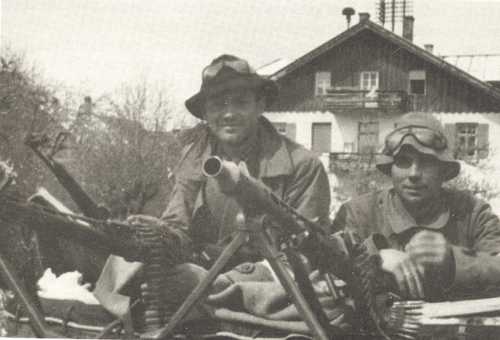
O.5 - Austrian Resistance.
Armed anti-Nazi Austrian resistance fighters in the Tyrol, 1944-'45. While Austrian society following the Anschluss seems to have been largely complaiscent about the whole business, enthusiasm for the Nazis' version of Germanism was not universal. Recent studies, insofar as they suggest anything definite, tend to indicate that the overall profile of Austrian attitudes mirrored that of the populace of Germany proper, ranging from strong enthusiasm for the regime to low-key opposition. There are some special features worth noting, however. Postwar writings by ex-Austrian officers in various branches of the Wehrmacht suggest that such people found their incorporation in the German forces relatively easy to accept due to the strong opposition to "Bolshevism" among the strongly Roman Catholic profile of the Austrian population and military. Within "Nazi Austria", the attempted suppression of Naziism by the Corporativist leaders of the First Republic in its latter days brought the more terroristic elements of the Austrian Nazi movement to the fore. This crystallised around the Austrian SS, whose former members retained a distinguishable hard-line profile through to 1945, and produced such notables as Kaltenbrunner and Globocknik. At the other end of the scale, there was, almost from the start, some low level resistance in civil society, promoted by some elements of the Catholic Church and by persons who remained attached to the "Danubian" version of German nationalism originally encouraged by Dolfuss and his political collaborators. Furthermore, and in particular from the aftermath of the battle of Stalingrad and its fallout, a limited degree of armed resistance developed in "peripheral" areas of the country, encouraged to some extent by US intelligence and special forces. The armed resistants were, typically, soldiers who quietly deserted from the Wehrmacht while on home leave or in home barracks, often taking their weapons with them. By 1945, these fighters had become a small but nonetheless significant nuisance to the Nazi authorities. The fighters shown here are armed with MG42 machine guns, presumably purloined from Heer sources. Best regards, JR.
This is a companion discussion topic for the original entry at https://www.ww2incolor.com/gallery/other-forces/47488/o.5-austrian-resistance.
